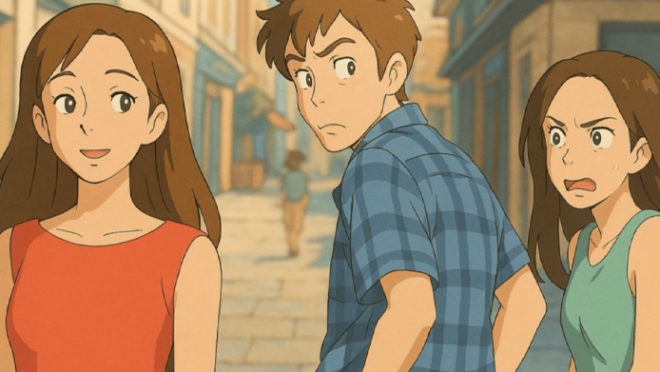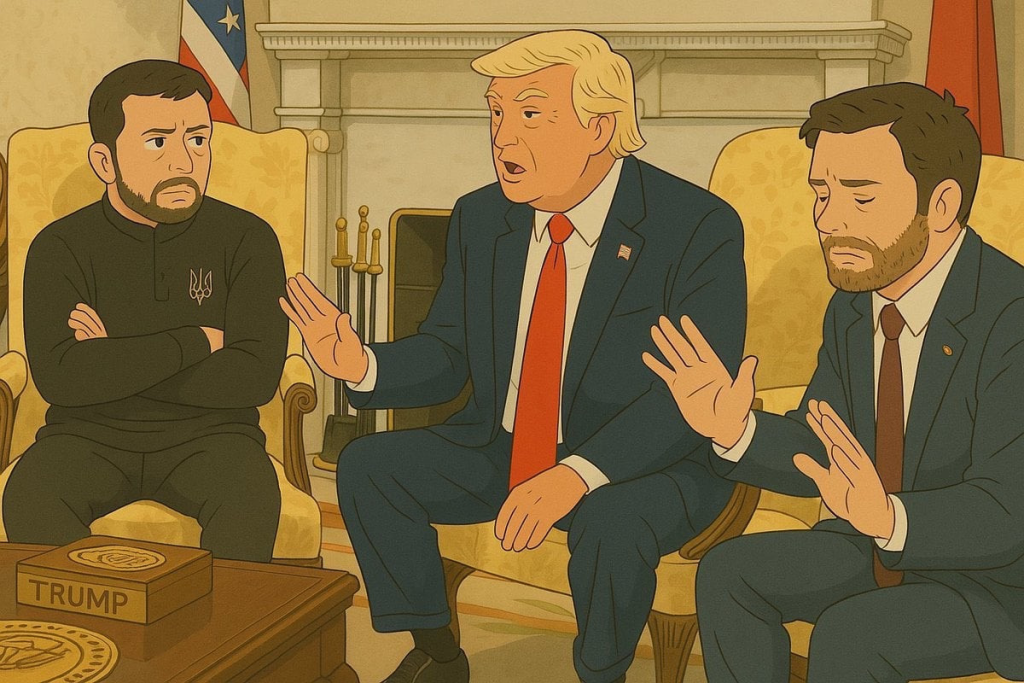We’re finally in a Ghibli movie—but at what cost?
We’re finally in a Ghibli movie—but at what cost?

The magic of Hayao Miyazaki’s art style lies in its ability to evoke a deep sense of nostalgia, even for those experiencing it for the first time. They have the power to make you feel connected with (un)familiar characters, revisiting never before seen places and reminiscing about eras never lived through.
The studio’s simplistic, hand-drawn, and vibrant art style has become its signature, and ultimately, that is what keeps people coming back for these films.
You can’t help but imagine what it would feel like to leave behind the bleak colours of the city and drown in the beautiful hues of a Ghibli movie.
Turns out, the dream isn’t too far off from becoming a reality.
If you’ve been anywhere near social media in the past couple of days, you must have seen the latest frenzy of famous photos appearing on your feed in a complete AI makeover.
As you scroll through, you may find the average couple reliving their wedding day with pictures that look like they commissioned Miyazaki to draw their wedding portraits with a Studio Ghibli-esque filter and so much more.
OpenAI’s recent update to GPT‑4o’s image generator features a “natively multimodal model capable of precise, accurate, photorealistic outputs.” Naturally, people across the globe put it to the test by prompting the AI tool to turn their photos into art using Studio Ghibli’s signature style.
Though the average person has found a way to cherish their favourite memories through art, the other side of the coin holds a heavier conversation about art and artificial intelligence.
If you are looking for an answer about the morality regarding AI-generated art, Miyazaki’s statement in a documentary from 2016 says everything you need to hear. After all, he is the creator of the art style.
In the video where he is shown an AI-generated demonstration, Miyazaki shows his disapproval, saying, “I am utterly disgusted. If you really want to make creepy stuff, you can go ahead and do it. I would never wish to incorporate this technology into my work at all.”
“I strongly feel that this is an insult to life itself,” added the artist.
But what exactly makes this approach so “creepy”?

Lacking the human touch
AI does not create original art pieces, rather, it samples from a bank of images online to create new images. This results in Frankenstein-like art that can capture style or subject, but in the process, loses its soul.
“AI-generated artwork won’t be replacing original artists’ works. However, what it does bring in is an entire new arena of ‘art,’ per se,” said artist Morshed Mishu.
Mishu feels the advent of AI-generated images won’t be too dissimilar to the commercialisation of clothing and apparel that started over a century ago. Even though commercial brands and entities made clothing more accessible to consumers, ‘handmade’ clothing ended up having a niche of its own and that too with a more exclusive and higher priced setting.
Many associate AI’s art style with hyperrealistic images created with oversaturated colours. Sometimes, these images are easy to tell apart from real photos or original art. Other times, they are done so well that you have to rely on minuscule details, such as the number of fingers the subject has.
In this regard, Mishu feels there are still a lot of subtle nuances and finer details that AI cannot fully replicate in its full potential, an aspect original artists are not limited by.
“For instance, a testament to a skilled artist is how well they can draw a subject’s hands. The anatomy, the wrinkles, the structure of fingers—these are very fine details that an artist masters over time,” shared Mishu.
“You can put whatever prompt you want to in an AI generator, but an observant eye will always notice the differences and the inability of AI to generate something as tricky,” he added.
Hyperrealism is so closely associated with AI’s supposed art style that a poorly touched-up photo can also be confused for being an AI-generated photo (based on a true story).
In the process of making art accessible to all, it has the capability of making art seem unoriginal and ultimately undesirable.
Writers will understand this peril the best. There was a time when words such as ‘blend’, ’embark,’ delve’, and so on, were words that felt poetic. Today, we had to think twice before writing the word ’emblem’ in fear that our article would seem unoriginal and AI-generated
In the same manner, while these many art styles that AI steals from are beautiful, when they are stolen, brought to the mainstream, and overused, they become undesirable. The original art loses its value.
There might even come a day when Miyazaki’s art appears to be less magical because the average person can achieve the basics of Miyazaki’s style in a fraction of the time.
The cost of accessibility
Zhang Jingna, a Singaporean photographer, recently posted two photos on Facebook that went viral amidst the Miyazaki craze. The first piece was a headshot of a conceptual photo of a girl with her eyes closed, covered in petals. The second image showed an AI-generated image of the same girl but with her eyes open.
In the post, she pens, “I can respect how far current gen Al has come from a purely technological point of view—credit to the researchers & scientists, not the marketers, not the prompters—but genuinely, what do we need this so badly for, that it would outweigh all the humanity, stories, and history being stripped away from our lives?”
This new trend also highlights another crucial question of whether we are ready to dismiss the skill and time of people in favour of convenient results. In this regard, artist Morshed Mishu feels the inevitability of AI does bring in a few unpleasant factors, but at the end of the day, the world will need to adapt, and artists need to find their own ways to co-exist.
“Over time, it will probably make aspiring artists lazier, maybe they will not be putting in all the hard yards that we have in our developments as artists. However, accessibility does not necessarily mean it has the power to wipe out pools of artists,” Mishu explained.
“Digital and AI-generated art will have their own place, but that’s limited. If you ever need to draw on a physical canvas or paint graffiti on walls, you still need human expertise, which is kind of irreplaceable,” He concluded.

Technological or unethical?
With Miyazaki’s art style now accessible with the click of a button and a prompt away, we do not have to wait for Studio Ghibli’s next movie. Miyazaki may never draw us, but we can envision ourselves in his movies through this tool. With so much power in our hands, what is the point of the artist in the first place?
The reality is, whether the AI-generated images are not original, the style is. The artist’s style developed over the years of his life and is a labour of love and time. Before the time of AI, it didn’t matter if art was copied because you could never copy the artist’s style.
However, all of it was copied with one update. Miyazaki himself stood against all of this. This is why training AI models in his style of art begs the question of how ethical the entire shenanigan is.
“The inevitability of technology doesn’t necessarily mean it’s not stealing. Training AI models using copyrighted images without the creator’s permission is deeply unethical,” concluded artist Mahatab Rashid.


